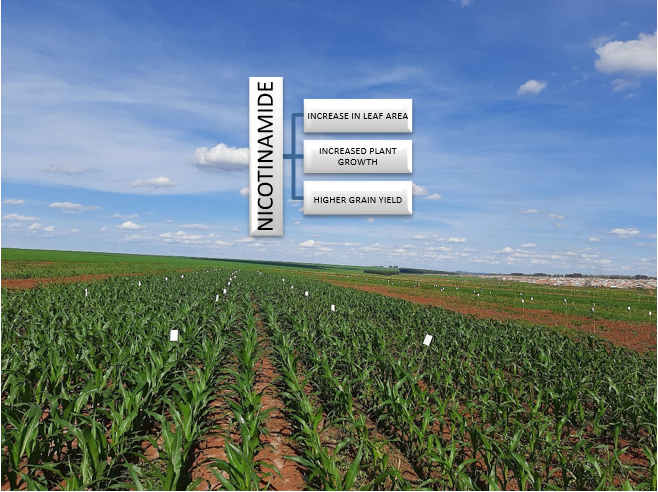Does foliar nicotinamide application affect second crop corn (Zea mays)?
DOI:
https://doi.org/10.48162/rev.39.040Keywords:
Zea mays, niacin, biostimulant, vitamin B3Abstract
The largest corn yeld in Brazil is currently in the second harvest, which is the most susceptible period to climatic adversities occurring during the cycle. Thus, introducing beneficial elements for maintaining the adequate development of the plant can help producers in obtaining greater kernel yields. Among studied elements, nicotinamide has potential use since it is associated with accumulating secondary metabolites and manifesting defence metabolism in plants. The objective of this work was to evaluate the influence of nicotinamide applied in different doses (only once or in instalments) on the biometric and productive characteristics of corn. The treatments were composed by the number of nicotinamide applications (one or two) and five doses (0, 50, 100, 150 and 200 mg L-1). Plant diameter, plant height, ear insertion height, leaf area and dry matter, yield and 100-kernel mass were evaluated. It was found that doses close to 100 mg L-1 resulted in increases in vegetative and reproductive development, regardless of the number of applications. In this way, foliar nicotinamide application positively influences the biometric and productive characteristics of second crop corn.
Highlights
- The use of nicotinamide in corn plants improves its growth, yield components and grain yield.
- A single application of nicotinamide during vegetative stage V3 at a dose of 100 mg L-1 is sufficient to increase the leaf area of corn plants.
- Corn grain yield can be increased by 12.6% with a single application of nicotinamide.
- There was no need for two applications of nicotinamide in corn crop.
Downloads

Downloads
Published
How to Cite
Issue
Section
License
Copyright (c) 2018 Revista de la Facultad de Ciencias Agrarias UNCuyo

This work is licensed under a Creative Commons Attribution-NonCommercial-ShareAlike 3.0 Unported License.
Aquellos autores/as que tengan publicaciones con esta revista, aceptan las Políticas Editoriales.










.jpg)




